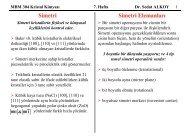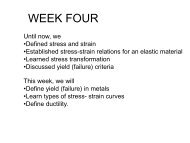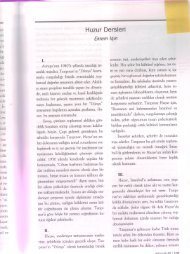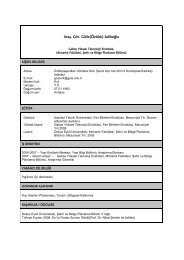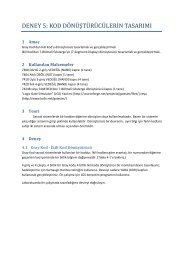How to Hire A-Players: Finding the Top People for ... - GIT home page
How to Hire A-Players: Finding the Top People for ... - GIT home page
How to Hire A-Players: Finding the Top People for ... - GIT home page
You also want an ePaper? Increase the reach of your titles
YUMPU automatically turns print PDFs into web optimized ePapers that Google loves.
162 <strong>How</strong> <strong>to</strong> <strong>Hire</strong> A-<strong>Players</strong><br />
‘‘Why did you choose that strategy?’’<br />
‘‘What made you believe that layoffs were <strong>the</strong> right answer?’’<br />
‘‘What steps did you take <strong>to</strong> make purchasing more efficient?’’<br />
‘‘What specific things did you do <strong>to</strong> reduce <strong>the</strong> time <strong>to</strong> close <strong>the</strong><br />
books from 30 days <strong>to</strong> 7 days?’’<br />
This tactic puts less pressure on you <strong>to</strong> come up with a lot of<br />
‘‘creative’’ interview questions. Instead, you spend your time listening.<br />
If you follow this simple approach, you will conduct a strong<br />
interview every time.<br />
A-Player Principle: The most important question <strong>to</strong> ask in<br />
an interview is <strong>the</strong> follow-up question. Don’t let candidates<br />
get away with just providing <strong>the</strong>ir rehearsed answers <strong>to</strong> your<br />
inquiries about <strong>the</strong>ir past accomplishments.<br />
Case Study: Follow-Up Questions Work<br />
While helping a client interview <strong>for</strong> a direc<strong>to</strong>r of branch operations<br />
position, I saw a perfect example of why follow-up questions<br />
are so important. There were three candidates in <strong>the</strong> final<br />
interview process. We asked <strong>the</strong>m <strong>to</strong> describe how <strong>the</strong>y had<br />
taken underper<strong>for</strong>ming branches and made <strong>the</strong>m profitable.<br />
Then we dug in<strong>to</strong> <strong>the</strong>ir initial answers with follow-up questions.<br />
The first two candidates provided fine answers <strong>to</strong> our questions<br />
by giving specific examples of times when <strong>the</strong>y replaced<br />
managers or rolled up <strong>the</strong>ir own sleeves <strong>to</strong> improve how <strong>the</strong>se<br />
business units were run. The third candidate provided answers<br />
that were dramatically more systematic and detailed than <strong>the</strong><br />
o<strong>the</strong>r two. He described, step by step, <strong>the</strong> processes that he<br />
taught his managers <strong>to</strong> follow in order <strong>to</strong> hit <strong>the</strong>ir financial<br />
goals. He also had multiple, specific examples of strategies he<br />
used <strong>to</strong> improve all aspects of branch operations.





